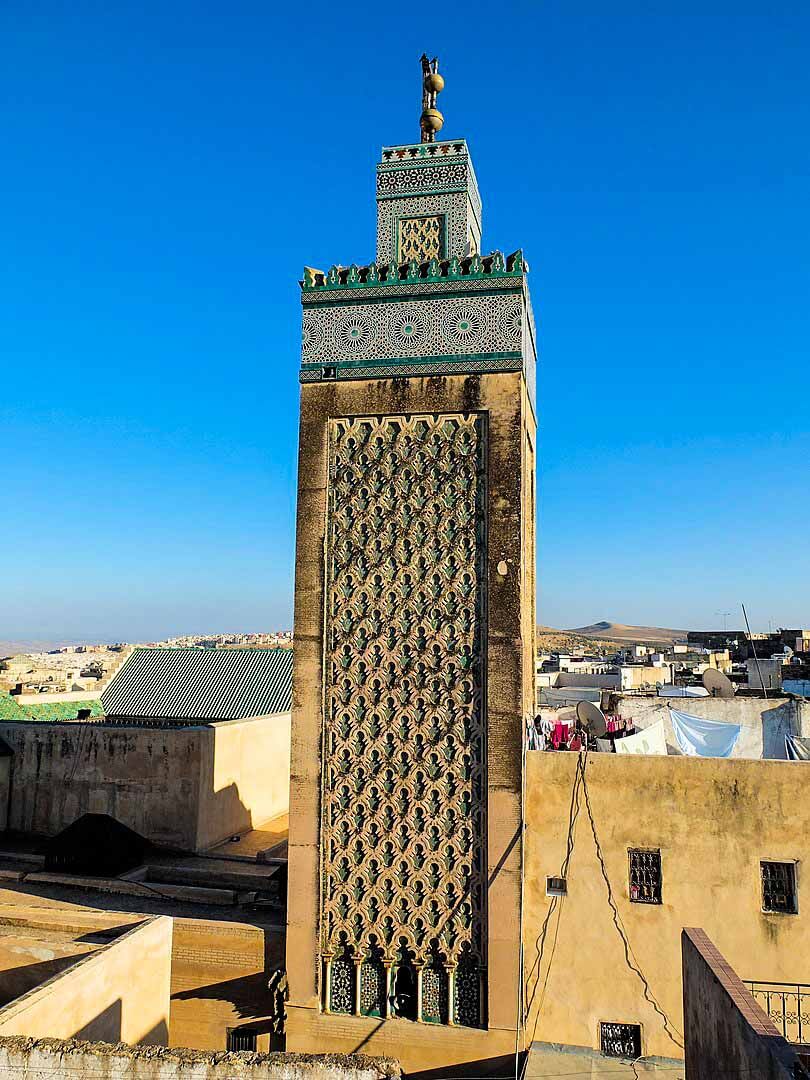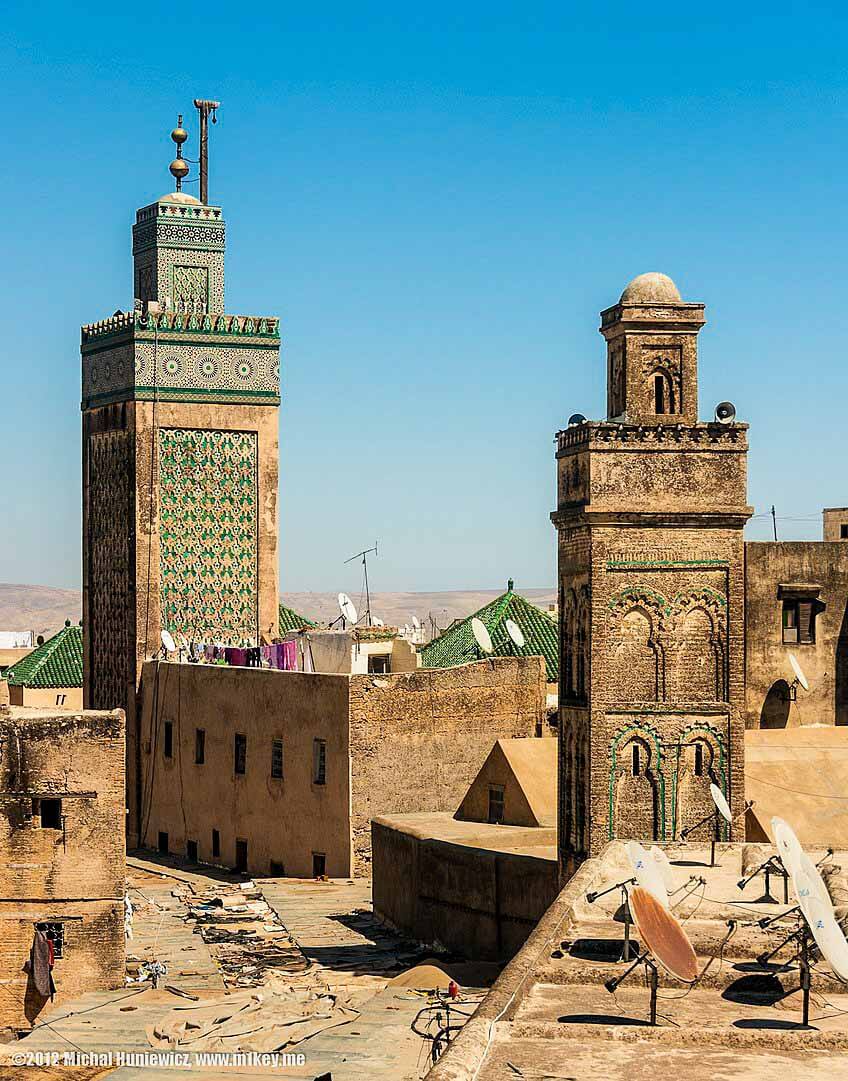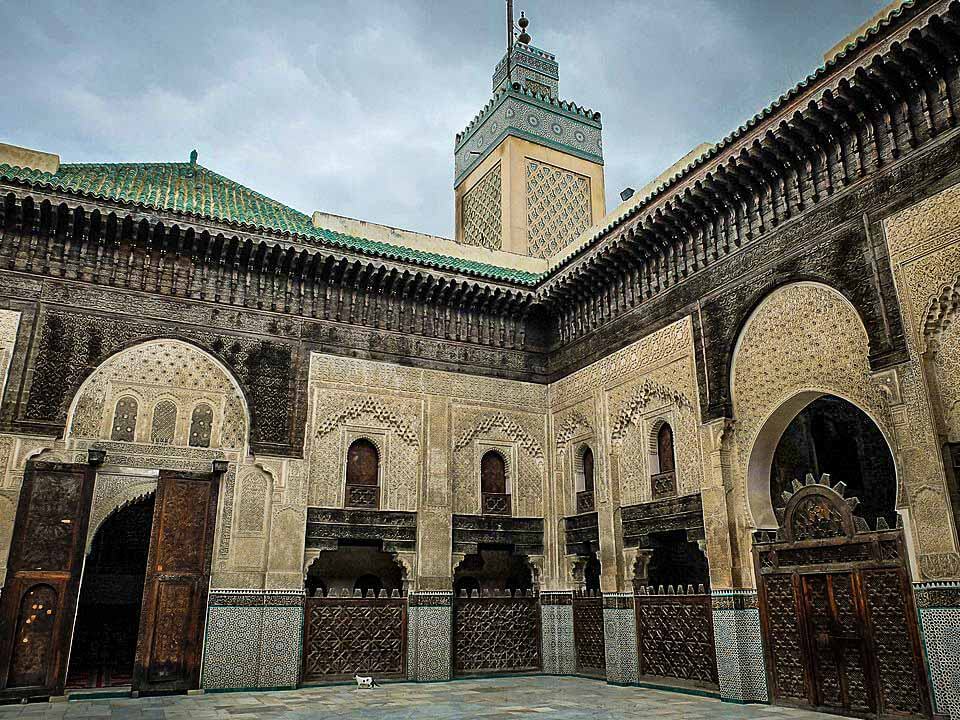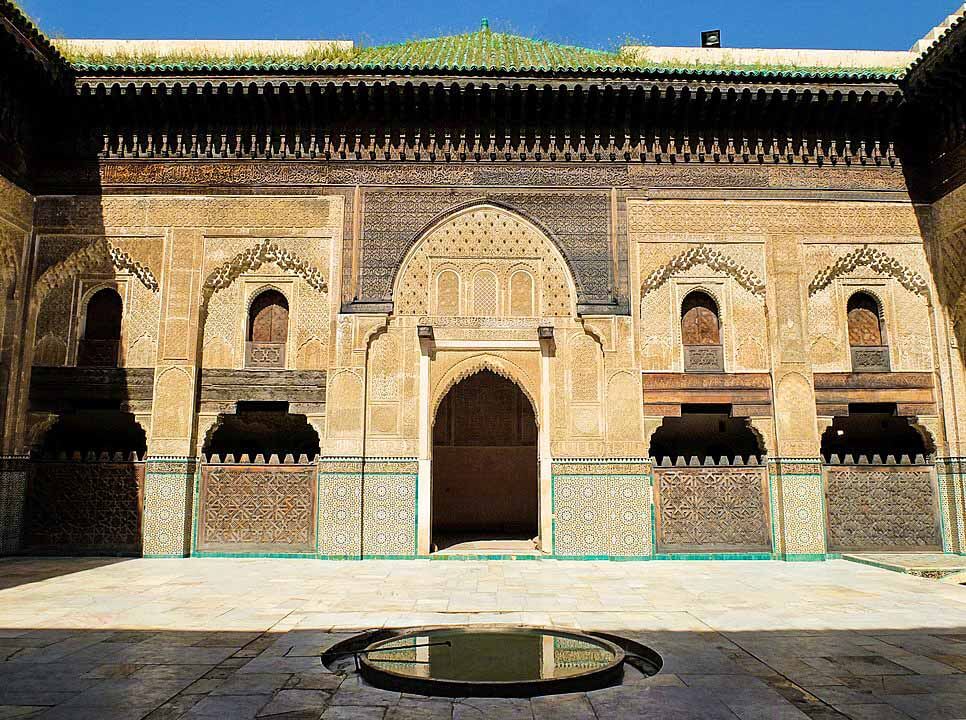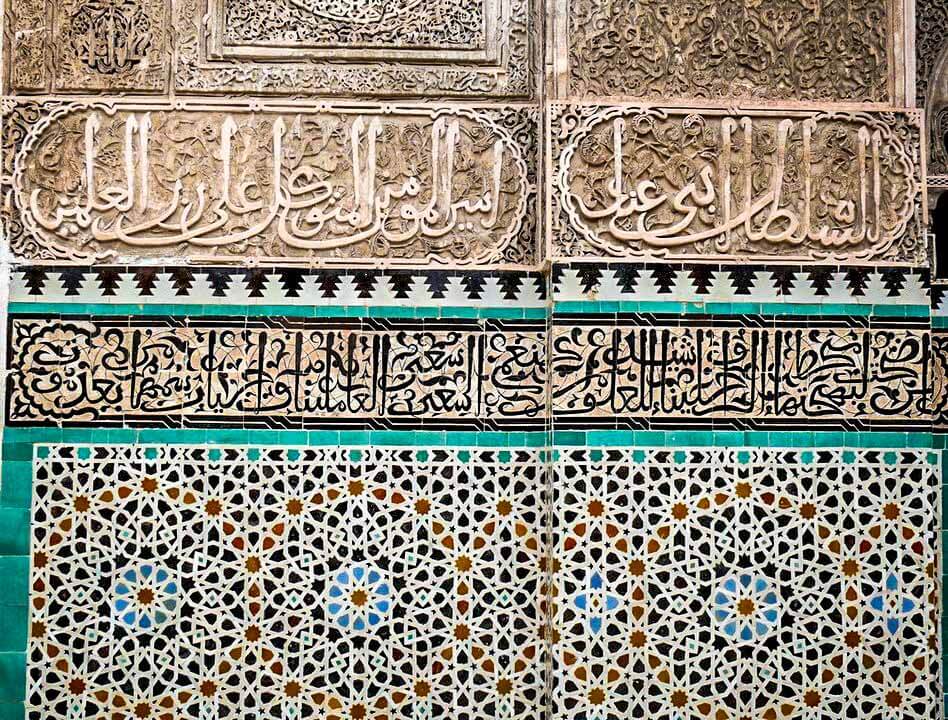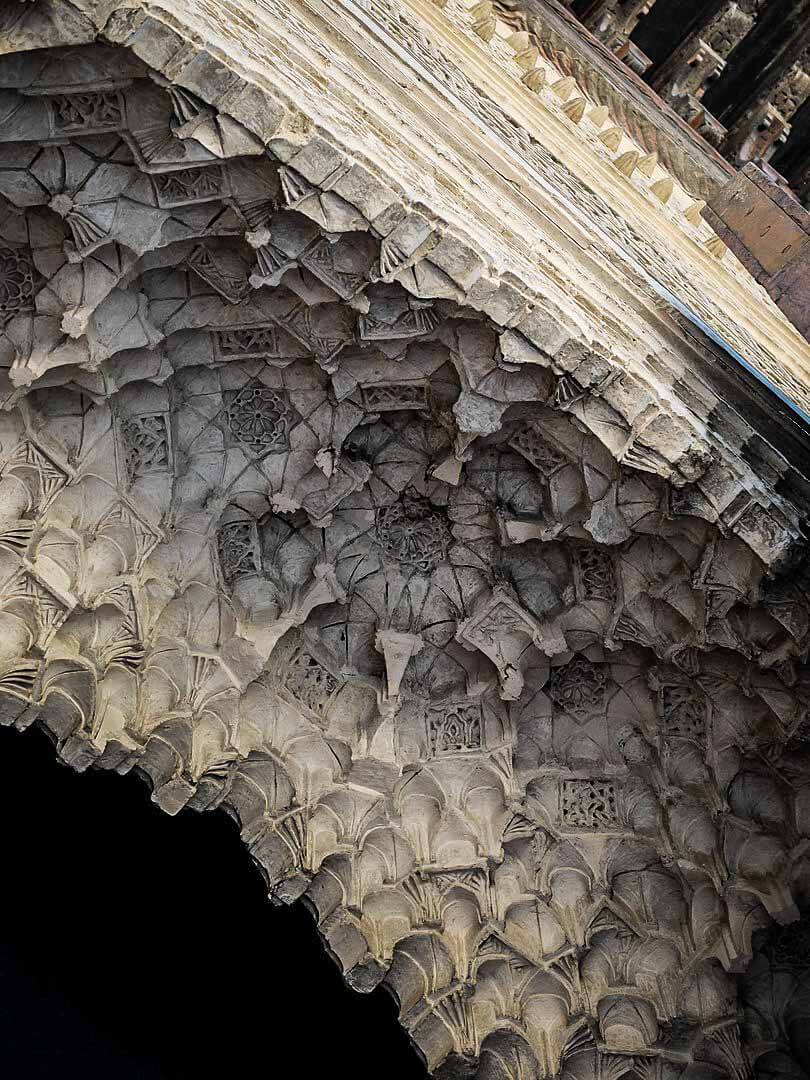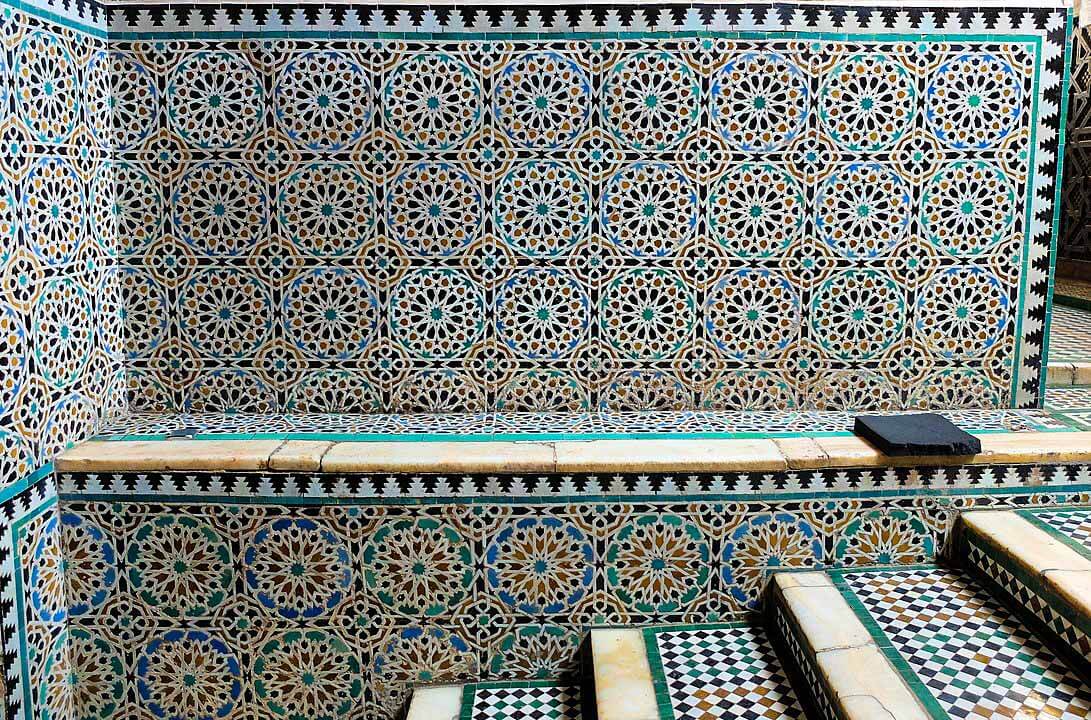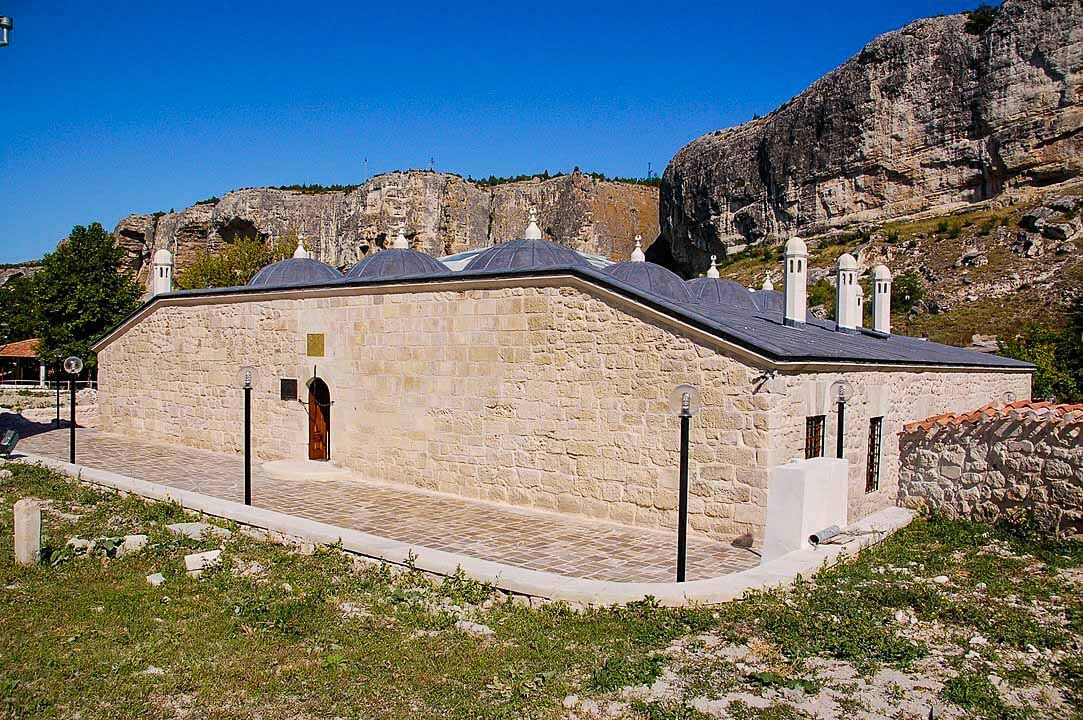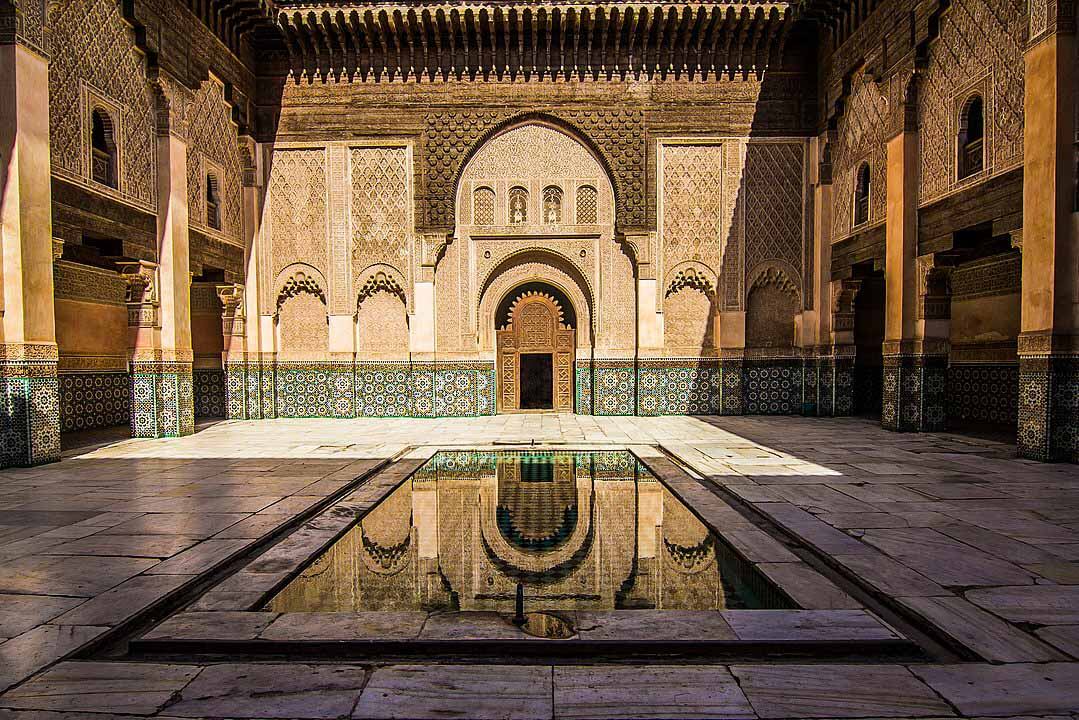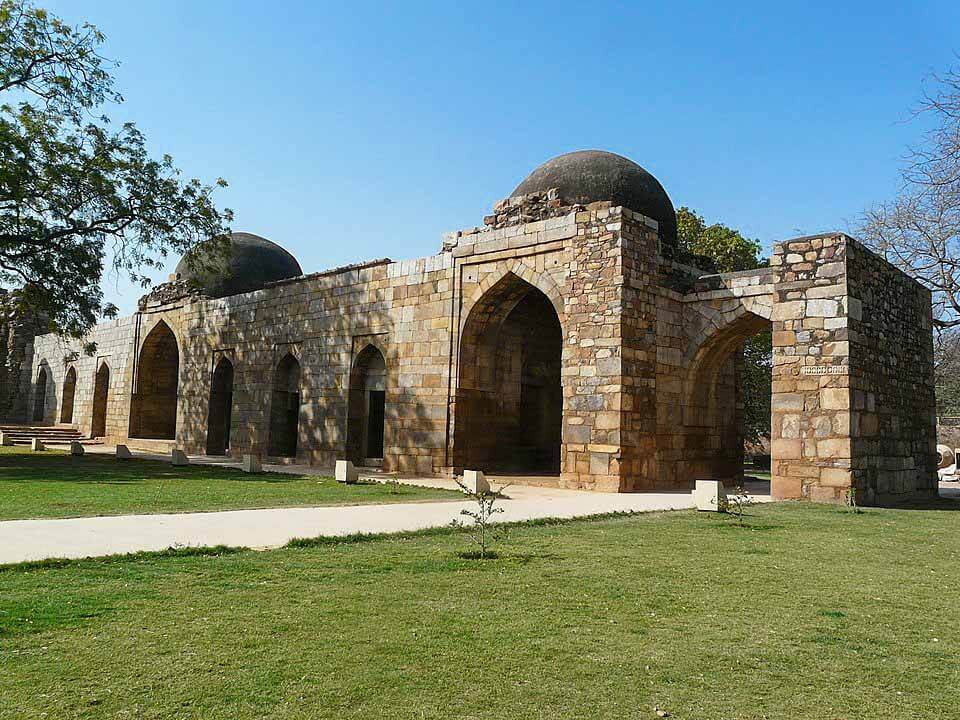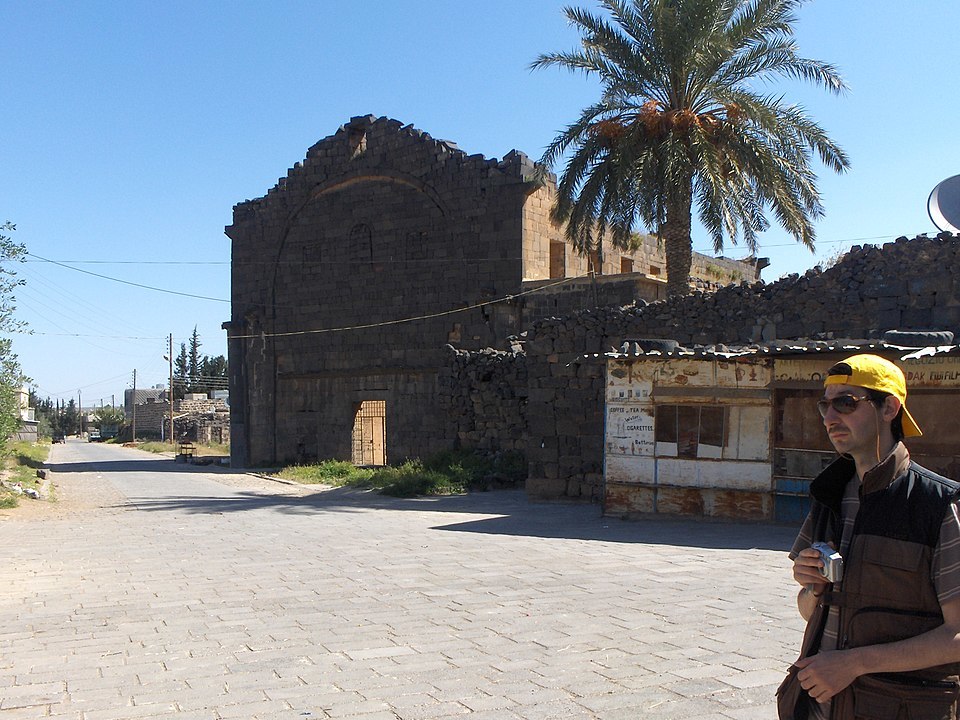Fes, Morocco
Coordinates: 34.062208, -4.982733
The Madrasa Bou Inania is a madrasa in Fes, Morocco, founded in AD 1350–56 by Abu Inan Faris.
It was the largest and most important madrasa created by the Marinid dynasty and turned into one of the most important religious institutions of Fes and Morocco.
It was the only such madrasa to gain the status of Grand Mosque or “Friday Mosque”, which meant that the Friday sermon (khutba) was delivered here like in the other most important mosques of the city.
As a result, it was fully equipped with the all the facilities of a major mosque and religious complex, in addition to extensive decoration.
It is widely acknowledged as a high point of Marinid architecture and of historic Moroccan architecture generally.
The name Bou Inania is derived from the name of its founder, Abu Inan for short.
Foundation and construction
A number of apocryphal stories about the madrasa’s creation exist. One reported story claims that Abu Inan felt guilt about his violent overthrow of his father (Sultan Abu al-Hasan) and gathered a number of religious scholars to advise him on how he could redeem himself and seek forgiveness from Allah.
They advised him to choose a location in the upper city which then served as a garbage dump and to transform it into a site of religious learning; thus, by purifying and improving a part of the city, he would do the same for his conscience.
The construction project was known to be highly expensive due to the scale and lavishness of the building.
One anecdote claims that the sultan, upon seeing the full cost of construction presented to him by nervous construction supervisors, ripped up the accounts book and threw it in the river, while proclaiming: “What is beautiful is not expensive, no matter how large the sum.”
The madrasa building has undergone numerous restorations, particularly in the 17th century after a damaging earthquake.
During the reign of Sultan Mulay Sliman (1792-1822), entire wall sections were reconstructed. In the 20th century restorations were carried out on the madrasa’s decorations.



